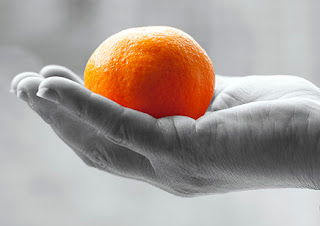I've not copied in all my feedback but have detailed below a summary with my comments:
Overall Comments
The excellent manner that
the work is delivered and presented shows the commitment to the module and a
great understanding of the theory reinforced by the production of a strong
collection of images that are very well executed.
An exceptionally
well-annotated Blog gives an indication of how you are progressing and records
the learning process and demonstrates a mature approach to the academic aspect
of the process.
WJ Comments - I'm very pleased with the feedback. I do need to ensure I remember my photography and not become solely focused on the assignment that this element suffers
Feedback
on assignment
The delivery and completion
of your work is extremely well paced and is of a very high standard. With the
restrictions of short days and poor weather the choice of predominantly still
life for this assignment works in your favour and shows an intelligence of what
is possible to deliver at this time. This maintains a very good structure that
prepares you to progress quickly and effectively.
There are a wide variety of
subjects and these for fills the brief that requires a chance of subject to
stretch your experience and provide a good collection for a portfolio as well
as the fulfilment of the brief.
Within the collection of
images there are some notable ones that deserve special comment:
WJ Comments - I've not detailed all my tutor's comments:
Colour Harmony through
complimentary colours, using what you identify as a ‘well known snack’
(Whatsit?) you have created an image of great power, using abstraction, and a
well observed eye.
The image shows the printed
detail and is reminiscent of the work of Roy Lichtenstein, who currently has a
wonderful retrospective exhibition at the TATE modern, intentional or not it is
great to see inspiration found from such work.
The use of a macro lens and
the limited depth of field characteristics have been particularly successful in
a number of images and those are predominantly the more successful aesthetic
creations. The Lemon & Lime in what looks like a gin and tonic is a very
appealing image on many levels.
The back-lit lemon slice
with green background is also a notable image that works. It may have benefited
by a silver/mirror reflector adding additional highlights on the foreground of
the lemon, it seems that you have got some subtle highlights already, but when
working at this scale it is difficult to execute and you have done well with
this.
WJ Comments - This is a good idea and one I shall remember. I do have a reflector but as does happen in the exercises / assignments sometimes that I focus too much and forget some of the simple elements. I will remember this
The use of flowers for an
assignment such as this is a natural choice but the choice of fresh pristine
flowers is not usually seen, so again, attention to detail and selection of
appropriate subject is to be commended.
The choice of a naked flame
shows a creative and innovative approach to the work, but although well
executed the large expanse of black dominates the image and there is far more
subtle colours within a flame, it is a strong image and a very difficult
subject but I feel that more control of this would have produced a stronger
image.
WJ Comments - I was initially think of the flame in contrast to blackness but in hindsight I should perhaps have focused entirely on the flame and the two colours
This assignment is about
colour and you have great evidence of understanding, however there are a few
images that are not as aesthetically successful. These are the landscapes,
which both seem to be a great contrast to the other material but as subjects
are been forced into answering the brief. It is perhaps wishing to have variety
that dictated the inclusion of these, but I feel that as the majority of the
macro and still lives are very successful, you may agree that as a body of work
they are the weaker images.
WJ Comments - I agree entirely I was torn between continuing with macro and filling the brief. I should in hindsight have kept the subject matter and produced the images as a set
The Hand & orange is
well executed but may benefit from closer cropping or a different ratio as the
dark of the sleeve tends to distract, these are small points, and should not be
taken as major issues.
This is the original:
This is with a tighter crop:
This removes the distracting black sleeve and makes the orange much more dominant in the image. I've amended the crop so that the orange is not dead centre, I recall this from earlier exercises :D
On the whole a well executed
assignment.
Feedback on
assignment Learning Logs or Blogs/Critical essays Context
WJ Comments - I do try to think about what I've done for each exercise and detail this in my blog together with what I've learnt. I'm now getting more comfortable with this process and will endeavour to critique my weaker images and detail why I think they are weaker
Suggested
reading/viewing Context
To
be aware of the quality of flower still life photography, I would suggest the
work of Carol Sharp and other photographers to be found on the Association of
Photographers website.
This
is also a great resource for future assignments as the photographers are
amongst the worlds best and the benchmark for many aspiring to work in a very
competitive but rewarding arena.




































